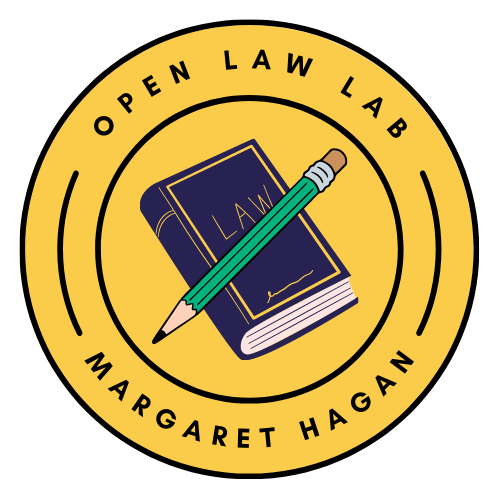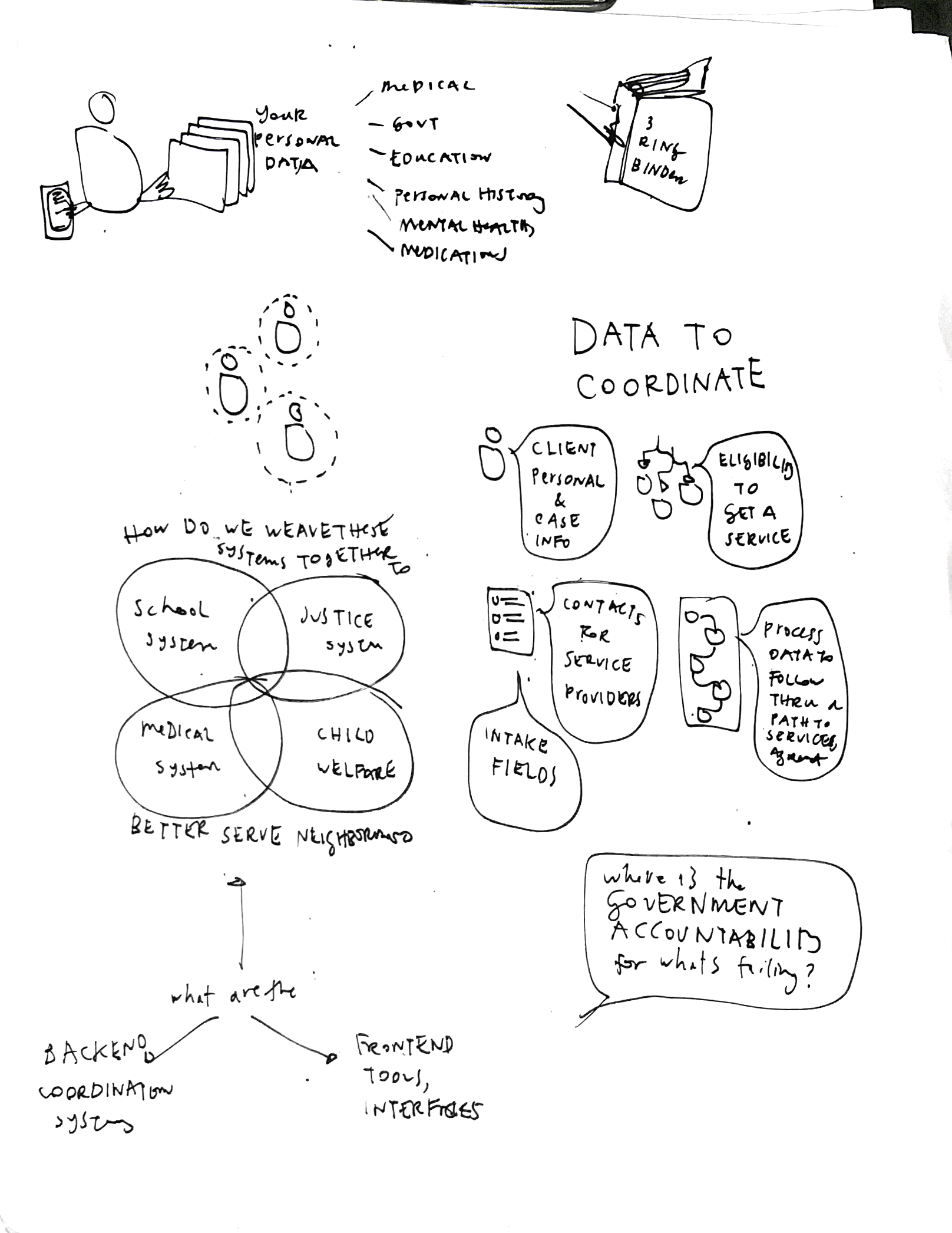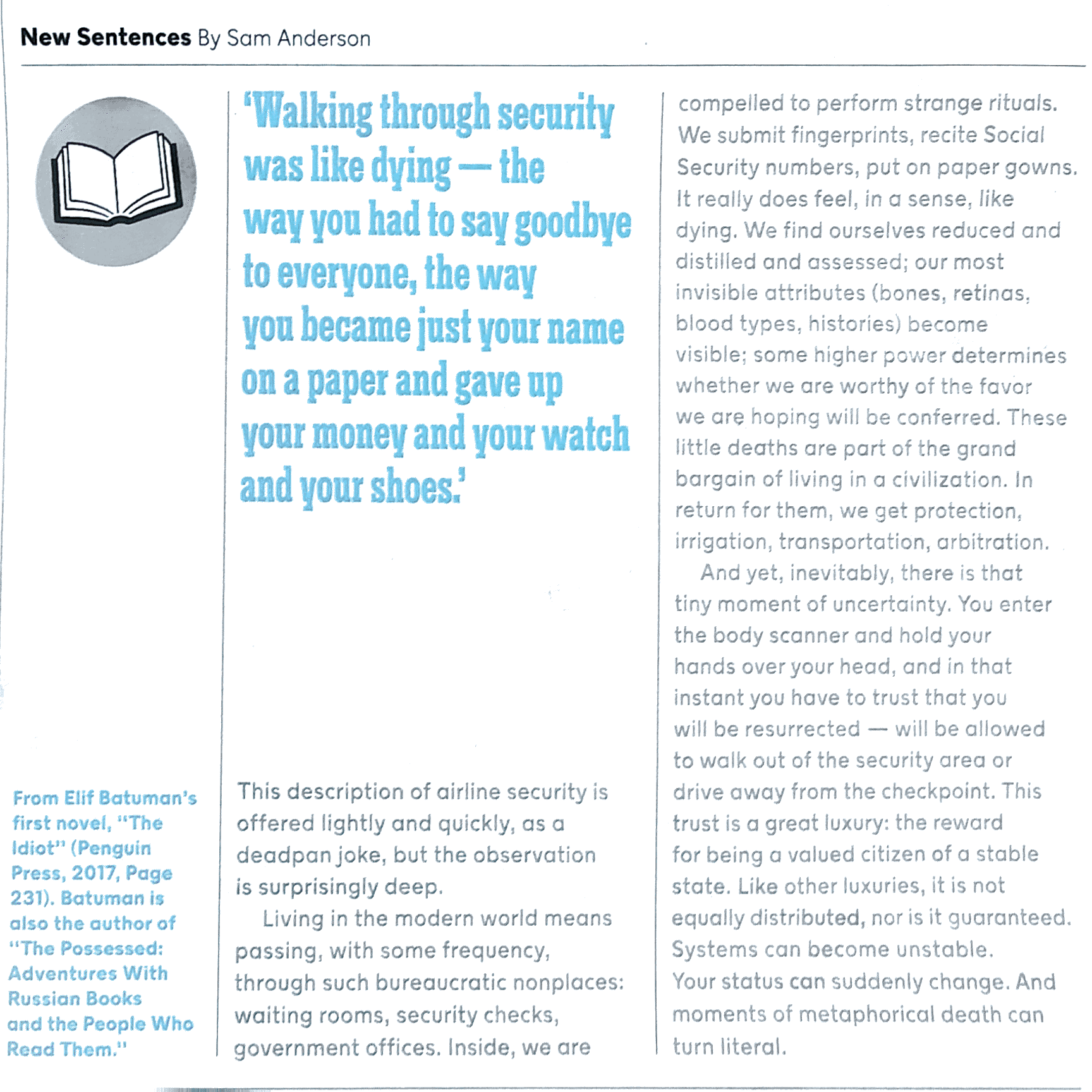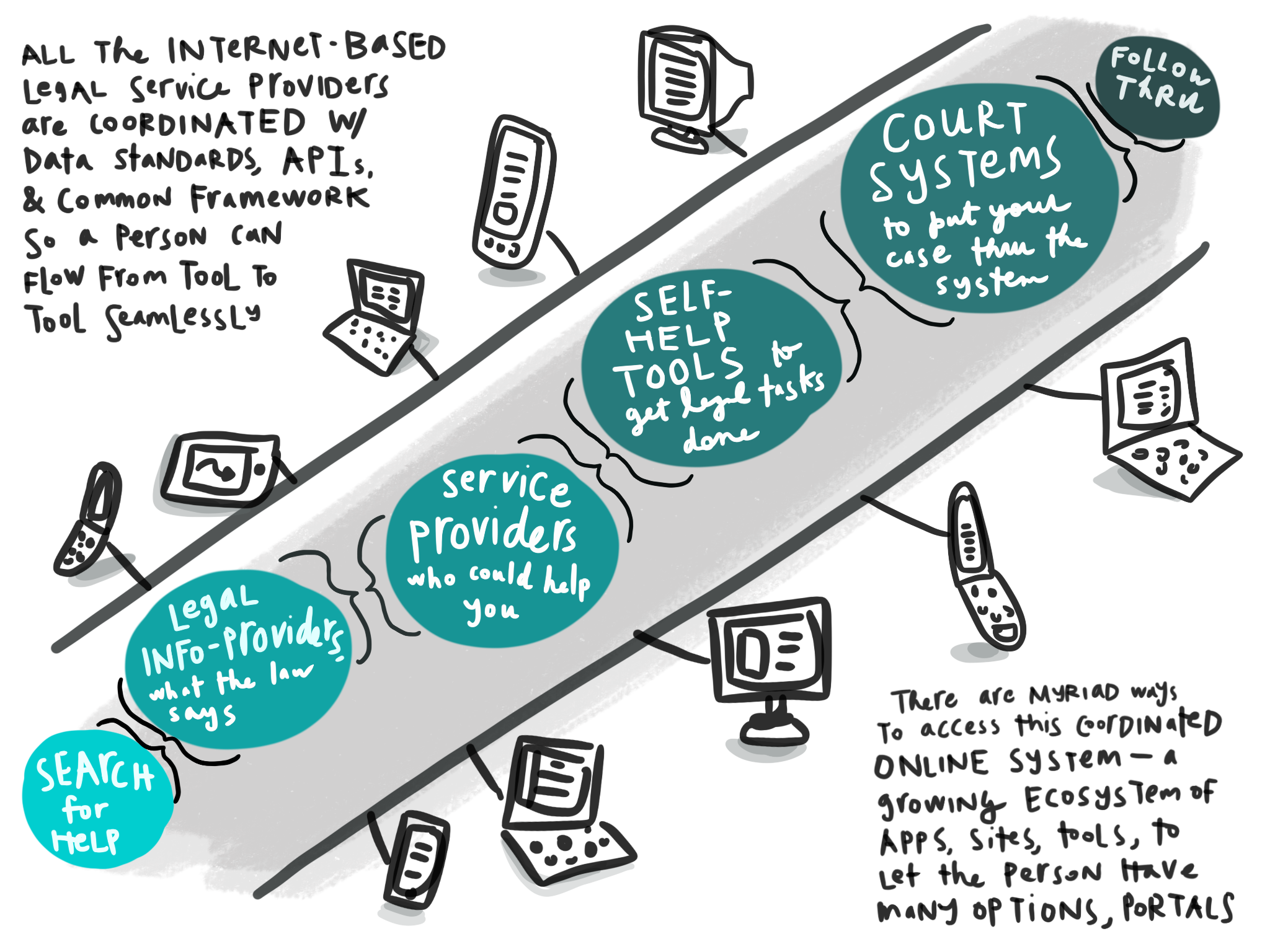Last week I spoke on a panel of access to justice & technology at the Google/Baker McKenzie event, the Children’s Rights Summit. The goal was to explore how the tech sector could come together with the legal sector to provide more meaningful and effective help for foster youth & other children in need.
The main point I made — and that others made as well — was the need to combine Backend efforts of coordinating our data systems between all the different govt. agencies and bodies, at the same time as running Frontend efforts to determine what the best way to present and interact with legal/social services are.
That Backend, data question turns out to be a huge one. The foster youth on the panel before mine reinforced it: they can’t see all the data collected about their life and services. There is a literal black binder that supposedly compiles it all, but they don’t get access to it. And the binder isn’t a smart thing — it doesn’t have electronic or coordinated versions to be able to process this data, and allow for strategic, timely interventions based on the data.
All the different stakeholders in the system don’t know the same data points — there is not clear, mutual understandings of what the kid’s situation is, and what is best. The young person is embedded in all these different systems — schools, hospitals, child welfare, foster homes, mental health, etc — but they aren’t talking to each other.
For me, this means that we need to be investing in a Federated Data System that unites these different government and private systems. These databases all need to be talking to each other, in order to make it easy for the young person to manage and control her own data — and to lay the groundwork for a new generation of ‘smart’ tools that could figure out when something is going wrong, when authorities might need to be alerted or intervene to help the young person, or what types of trends occur (one event leading to another to another) and how to disrupt bad patterns of behavior.
This information and smart tools could be made to serve many stakeholders:
- the young person in the foster system, who wants more control and oversight over the data that is being kept about her — and wants a system that responds to her needs and helps her when things start to go wrong
- the foster parent who needs to understand the background context and the current situation, to make better decisions for the young person
- the people who work in the system, to be able to see trends, needs, and macro-level insights to make better policies, and spend money in more meaningful ways
There are lots of different types of data to be coordinating among these systems.
- the young person’s personal data, and the history of services/system interactions
- information about who’s eligible to get a service, and how to connect to that service
- contact information about services that are available to a young person and her foster family, with up-to-date and specific data about who to talk to about this service
- legal data, about what a youth’s rights are, what rules apply to her, what she can be doing to protect herself
- process data, about how to follow the rules to get through a process, step by step — like applying for a benefit, filing a complaint, taking a legal action, etc.
The school system, justice system, child welfare system, and medical system need to be linked together into a coordinated backend — and then we need to design new frontend tools and interfaces to make these systems navigable & empowering. Right now they are confusing and dehumanizing.
The Children’s Rights Summit did a good job in laying out the many problems with these systems — now it is time to take a generative approach to actually build the coordinated, supportive, user-friendly system that foster youth need.






